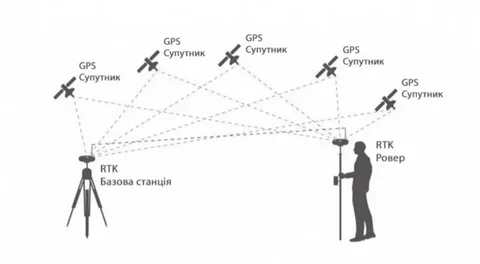When it comes to precision navigation and mapping, not all GPS systems are created equal. The debate around RTK GPS vs Traditional GPS: What’s the Real Difference? is becoming increasingly relevant as industries like agriculture, construction, surveying, and autonomous vehicles demand higher accuracy in positioning systems.
In this article, we’ll break down what sets rtk gps apart from traditional GPS, how each works, and which one may be right for your specific needs.
What is Traditional GPS?
Traditional GPS, or Global Positioning System, is a satellite-based navigation system that provides location and time information anywhere on Earth. It typically uses signals from at least four satellites to calculate the receiver’s position.
Accuracy of Traditional GPS
- Accuracy Range: 3 to 10 meters (approximate)
- Factors Affecting Accuracy: Atmospheric conditions, satellite geometry, and signal delays.
For general use—like driving directions or casual outdoor activities—traditional GPS offers sufficient accuracy. However, for professional applications requiring pinpoint precision, this margin of error can be too large.
What is RTK GPS?
RTK (Real-Time Kinematic) GPS is a more advanced form of GPS that provides centimeter-level accuracy by using real-time corrections from a fixed base station.
How RTK GPS Works
- A base station at a known location sends correction data to a rover (mobile GPS unit).
- These corrections eliminate most of the common errors found in traditional GPS signals.
- RTK can be delivered via radio, cellular networks, or internet.
RTK GPS vs Traditional GPS: Key Differences
Let’s dive deeper into the core of the comparison: RTK GPS vs Traditional GPS: What’s the Real Difference?
| Feature | Traditional GPS | RTK GPS |
| Accuracy | 3–10 meters | 1–2 centimeters |
| Latency | Moderate | Very low (real-time) |
| Use Cases | Navigation, fitness apps | Surveying, farming, construction |
| Setup Complexity | Easy | Requires base station & setup |
| Cost | Low | Higher initial investment |
Use Cases Where RTK GPS Excels
The real power of RTK GPS is realized in applications where high precision is non-negotiable. These include:
- Precision Agriculture: Enables auto-steering tractors with centimeter accuracy.
- Land Surveying: Eliminates the need for manual measurements.
- Construction: Allows for machine control and exact placement of materials.
- Drones and Robotics: Provides stable, accurate positioning for automation.
In all these industries, RTK GPS vs Traditional GPS: What’s the Real Difference? becomes more than just a technical question—it directly impacts productivity, efficiency, and cost.
Which One Should You Choose?
If you’re using GPS for recreational activities or standard navigation, traditional GPS will serve you well. However, if your work involves exact measurements, automation, or spatial data collection, investing in RTK GPS is likely the better option.
Final Thoughts
So, RTK GPS vs Traditional GPS: What’s the Real Difference? In short, it’s all about accuracy, reliability, and application. While traditional GPS is sufficient for everyday use, RTK GPS brings professional-grade precision to industries that rely on exact location data. Understanding the difference helps you make smarter decisions—whether you’re buying a GPS system or planning a large-scale project.


